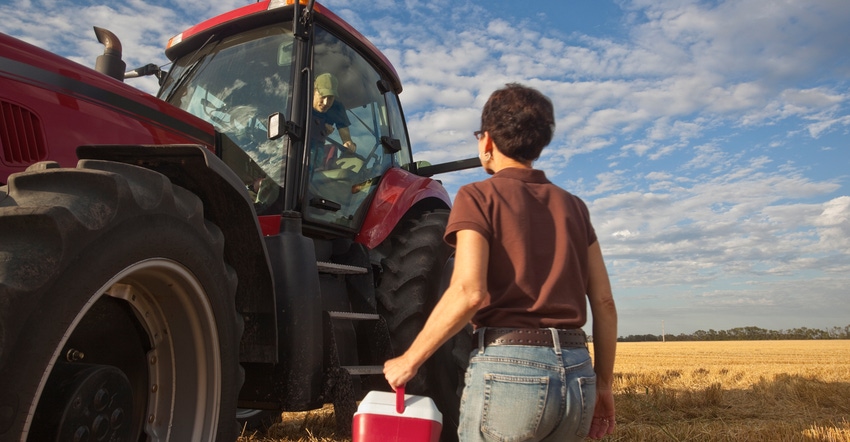June 17, 2021

The days have turned hot and humid, which means wheat harvest is just about to kick into gear in Kansas. Before you head out to the field, though, now might be a good time to review safety precautions with your families and employees.
This is even more important if you’re bringing friends and family to the field for a visit. Sure, we want to encourage that excitement over farming in our youngsters who may someday inherit family farm ground and responsibilities. We want distant relatives and friends to reconnect to their farming roots.
Wheat harvest is traditionally a time for all the family to come back home. Some are there to help, some are there to reconnect to their rural roots. “Brother Ted” comes back from Kansas City to run a grain cart, while “Aunt Marge” and the cousins come to the field for combine rides.
Now, Brother Ted and Aunt Marge and the cousins are sweet and good people. But safety in Kansas City is different from safety around farm equipment. So, before anyone steps foot into the field, have a family talk about expectations and responsibilities.
Children in the field
We take pride in agriculture, and it’s good that we share this pride with the next generation. And there are plenty of family members out there who could be inspired to go into agriculture with that combine ride when they’re 8 years old. But we want to make sure their visits are safe as well as inspiring.
The car ride to the field is an ideal place to start the safety talk with children. No playing on the combine or in the grain cart. Watch for moving equipment because operators can’t always see us on the ground. And when they ride in the combine or tractor, they are in the buddy seat. Period.
I know it’s cute to see kids on the floor of a cab napping, but that’s not the safest place for them. Front windows have been known to pop out, with tragic consequences for the youngsters leaning on them.
Take the time to lay down rules about where children can go in the field, ensure they have appropriate adult supervision and make sure they know there are consequences to breaking the rules. My dad had no second thoughts about kicking family members out of a field if they were doing something that could hurt themselves or someone else.
Adults in the field
Whether they’re there as volunteer help or as tourists, our adult friends and family also need to have gentle reminders themselves on how to behave in a harvest field.
Let’s start with photo safety. Everyone wants that multigenerational farm shot for the Instagram, I know. But be sure you’re taking photos that show proper safety precautions. That means only one kid per buddy seat, no one playing in loose grain in carts, and no dangling out of the cab on a moving combine to get “the perfect shot.” It means if you’re shooting from the ground, you wear bright colors, so that operators can see you — and you’re aware of the positions of equipment in the field and give yourself a path out of the equipment’s way.
And if you’re hosting friends and family on your farm, it’s really important to model safe behavior yourselves. You and I know that shortcuts in operating large equipment can and do lead to injuries and death. So take the opportunity to get rid of these bad habits while your visitors are in the field.
Take the time
These are just a few examples of safety precautions to bring up. Take a moment in your harvest preparation to consider how your harvest operation might look to your nonfarming visitors. Whether they’re riding along on a round or taking photos or helping you get that crop to the elevator, think about what you take for granted as common-sense safety rules — and if your visitors have that same common sense. You’re around this every day; they aren’t.
We want to encourage a love of agriculture in our friends and family. But we want to make sure that those field visits happen for years to come, too.
You May Also Like




